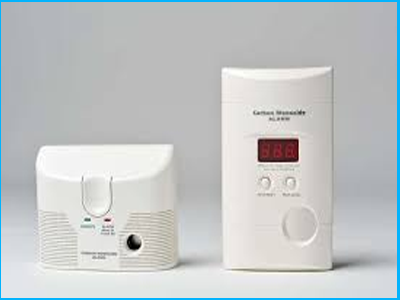Detect and Protect: The Latest Advances in Carbon Monoxide Detectors

Carbon monoxide detectors save lives by detecting this invisible, odorless gas. Top options include Google Nest Protect for smart features and Kidde Nighthawk for affordability. Choose based on setup, lifespan, and features like multi-gas detection or digital displays. Regular testing, timely battery replacement, and proper placement ensure optimal safety.
Carbon monoxide (CO) is a colorless, odorless gas that poses significant risks to human health, making reliable carbon monoxide detectors critical for safety. These devices alert homeowners to dangerous levels of CO, preventing accidental poisoning. Here's a breakdown of the latest insights and advancements in carbon monoxide detectors.
Why Carbon Monoxide Detectors are Essential?
Carbon monoxide is produced by the incomplete combustion of fuels like natural gas, wood, and propane. Exposure to CO can lead to serious health problems or even death, as it binds to hemoglobin in the blood, reducing oxygen transport. CO detectors are especially critical for homes with fuel-burning appliances, fireplaces, or attached garages. Early detection can prevent severe outcomes, particularly in areas with limited ventilation.
Types of Carbon Monoxide Detectors
Modern CO detectors come in various configurations to cater to different needs:
1. Battery-Operated Models: These are versatile and portable, suitable for areas without hardwired connections. Examples include Kidde and Jemay detectors, which boast long battery life.
2. Hardwired Detectors: Integrated with a home’s electrical system, they often feature battery backups for power outages.
3. Combination Detectors: Devices like the Google Nest Protect offer dual functionality, detecting both smoke and CO, and integrate with smart home systems for added convenience.
4. Digital Display Models: These show real-time CO levels, like the Vzmcov Plug-in Detector, which also tracks natural gas concentrations.
5. Portable Detectors: Compact and travel-friendly models like the GZAIR Travel Detector are ideal for temporary setups, such as in recreational vehicles.
6. Smart CO Detectors: High-end options, such as First Alert Onelink, sync with smartphones to send alerts and offer remote control features.
Choosing the Right Detector
When selecting a detector, consider:
• Home Setup: For homes with existing electrical systems, hardwired detectors with battery backups are ideal. For older homes or temporary setups, battery-operated or plug-in models are better.
• Advanced Features: Smart features are essential for tech-savvy homeowners who want integration with home automation systems.
• Durability: Look for devices with a lifespan of 7–10 years to minimize frequent replacements.
• Portability: For travelers or RV owners, compact models with robust sensing technology are highly recommended.
Installation and Maintenance
Proper installation and upkeep are critical:
• Placement: Install detectors near sleeping areas, in basements, and close to fuel-burning appliances.
• Testing: Test devices monthly using the test button to ensure functionality.
• Battery Replacement: Replace batteries as indicated by the manufacturer or immediately when the device signals low battery levels.
• Replacement Timeline: Replace units as per their end-of-life indicators, usually every 7–10 years.
Emerging Trends in CO Detectors
1. AI and IoT Integration: Devices like the Google Nest Protect incorporate AI to improve detection accuracy and reduce false alarms.
2. Multi-Gas Detection: Modern detectors often include sensors for additional gases like methane and propane.
3. Eco-Friendly Designs: Sustainable materials and energy-efficient technologies are increasingly being adopted in newer models.
Conclusion
Carbon monoxide detectors are indispensable safety tools that have become more sophisticated with advancements in technology. Whether you’re upgrading to a smart detector or seeking a reliable battery-operated unit, there are ample choices in 2024 to fit every need and budget. Staying proactive with installation and maintenance ensures optimal protection against the silent threat of CO.
(Fire "Safety Blogs" Published in January 2025 Edition)




.png)







